Scotland brings Burns and reggae to Venice Biennale
- Published
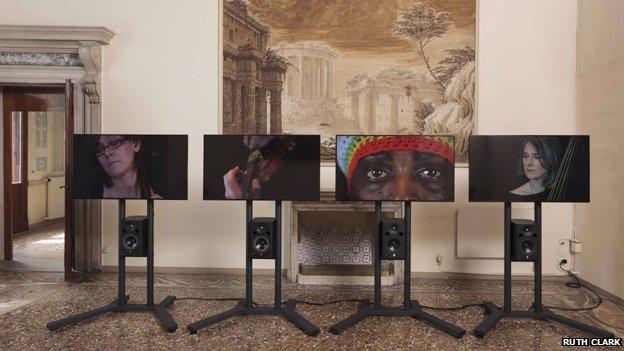
Scottish artist Graham Fagen has brought the words of Robert Burns to the Venice Biennale, the most important contemporary art festival in the world.
Burns' 1792 song The Slave's Lament can be heard drifting through the rooms of the Palazzo Fontana on the Grand Canal.
The 16th Century palace was once the birthplace of a pope and this summer plays host to Fagen's exhibition for the Scotland + Venice project, external, an entirely new body of work devised for the rooms of this historic palazzo.
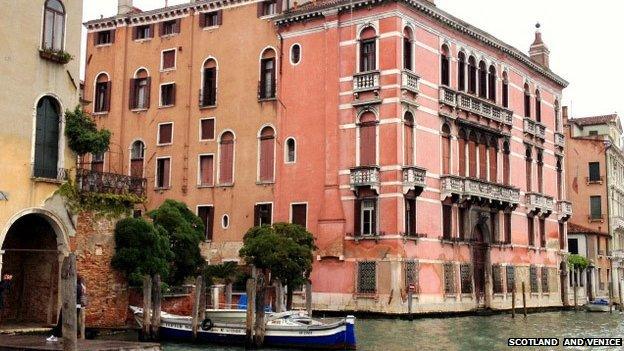
Fagan's exhibition is at the Palazzo Fontana in Venice
Fagen, whose work combines video, performance, photography, and sculpture with text and music, has been working with the composer Sally Beamish, the classical musicians of the Scottish Ensemble and the Jamaican reggae singer Ghetto Priest to bring new life to Burns' historical work.
He filmed and recorded the musicians at work in Glasgow's City Halls and British reggae producer Adrian Sherwood mixed the music.
Fagan says: "I suppose the essence of the exhibition starts with my own life."
The artist grew up in Irvine in Ayrshire and his Venice exhibition reflects the impact of reggae music on his life as well as his ambivalent feelings about Burns, who was such an important feature of local culture.
The Burns poem is a famous statement against slavery, but when he was young 18th Century Scottish poet had been driven by economic hardship to consider leaving for the West Indies where he would have worked overseeing slave labour on a plantation.
Burns published a volume of poems to try to raise money for his ticket to Jamaica. That book became the famous Kilmarnock edition. The success of his poetry meant he never left Scotland.
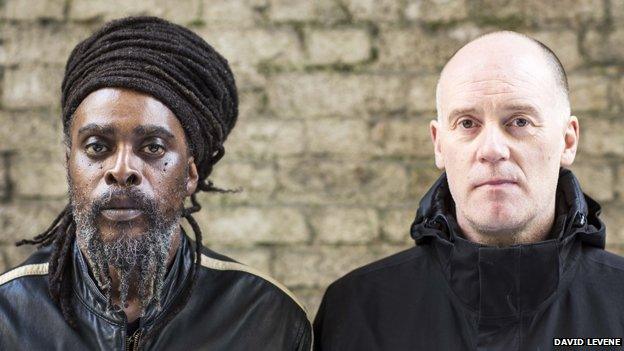
Jamaican reggae singer Ghetto Priest worked with Fagen (right) on the project
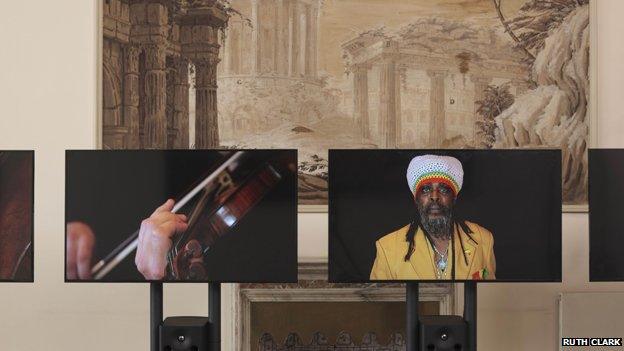
When you hear the Slave's Lament sung by Ghetto Priest with such conviction you realise the Burns was capable of great empathy with the character of the slave.
Fagen says that the vocalist "has a very strong affinity with the song".
Sally Beamish says she is "excited" to be collaborating with Fagen at a significant moment in his career.
She says: "Our collaboration highlights the impact Scottish folk songs has had on both of us - and I am honoured to take part in this extraordinary opportunity with so many inspirational artists and musicians."
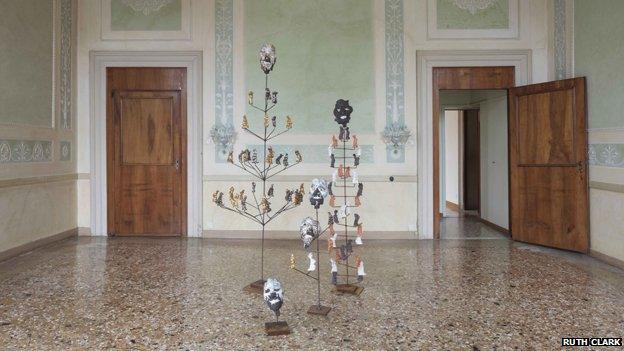
Scheme for our Nature features sculptures adorned with casts and moulds of Fagen's hands, face and teeth
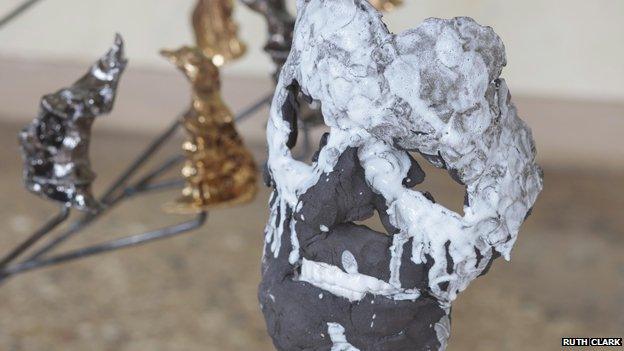
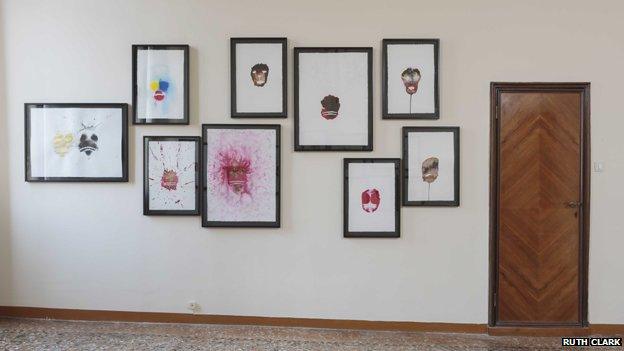
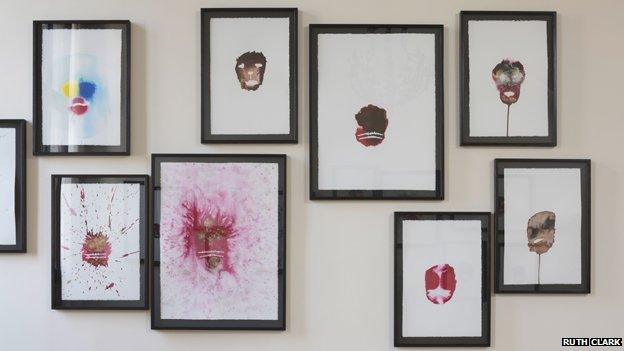
The exhibition runs from 9 May to 22 November and is funded by Creative Scotland. It is supported British Council Scotland and the National Galleries of Scotland.
It links Venice with a much smaller port in Scotland - Arbroath.
Hospitalfield Arts in the Angus town came up with the proposal to commission Fagen and its Lucy Byatt has curated the exhibition.
The historic Hospitalfield House mansion was bequeathed to a trust by the 19th century painter Patrick Allan-Fraser and is now an arts venue.
The Arbroath connection is maintained in Venice by providing hospitality to the international press in the form of its best known export: the smokie.
Byatt says: "It's an opportunity to give Graham the platform that he needs at this stage and now I am really looking forward to inviting audiences in."
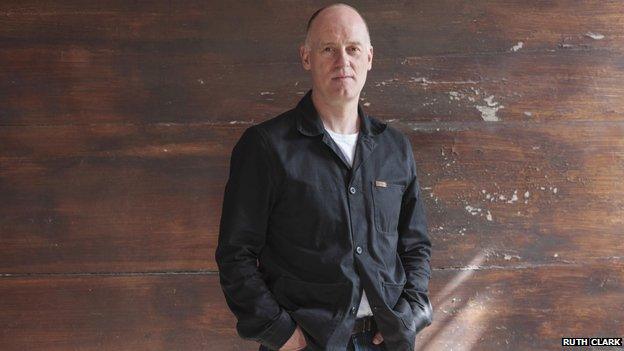
Graham Fagan grew up in Irvine in Ayrshire
She will bring a version of the exhibition to Edinburgh in Spring 2016.
Byatt says: "When we bring the show back to Edinburgh it will be reworked and will resonate in a different way. Our aim at the moment is to find a space in Leith in the docks in a site that has a specific yet still maritime history and reinstall the show."
La Biennale di Venezia is the largest and most prestigious visual arts exhibition in the world.
This will be the seventh presentation from Scotland + Venice but Scottish artists have long been part of the Venice Biennale.
It was launched in 1895 and Charles Rennie Mackintosh was among a group of artists who exhibited in 1899.
There are 89 official national pavilions and more than 44 associated events. The whole event attracts more than half a million visitors.
Since 2003 the Scotland + Venice exhibition has had a regular presence at the biennale and it is seen by the movers and shakers of the art world as well as tourists and ordinary art lovers.
Artists who have exhibited include Simon Starling (2003) and Martin Boyce (2011) who both went on to win the Turner Prize. Duncan Campbell's film It for Others, commissioned by The Common Guild for Scotland + Venice in 2013, won the Turner Prize last year.
The Scotland + Venice learning team are 28 students and recent graduates who will each spend a month working at the palazzo venue.
Climbing the grand stairs up to the piano nobile, or first floor, of the palazzo this week, Fagen pointed out a little detail I never would have noticed.
Next to the grand entrance were a couple of wooden steps and tiny wooden door that would have served as the servants' entrance.
For all its grand frontage, life behind the public rooms of the Palazzo is more homely.
Staff from the learning team live in an apartment, carved out of these servants quarters.
They will get the chance to meet up with other teams from across the globe who are working at the biennale.
One of the invigilators from the Welsh exhibition has already set up a breakfast club for those staffing venues across the city.
Anna Danielewicz is a 23 year-old Polish student who came to Scotland to study medicine but ended up leaving her course. She now studies art at Edinburgh College of Art and believes Scotland is very supportive of young artists.
She says she is delighted to join the learning team at the Palazzo Fontana.
She says: "It has been a gradual process. But this week we were listening to Graham talking so eloquently about the work. We were all just stunned. I'm definitely happy to be sharing this with visitors."

The Rope Tree reflects the maritime traditions of Venice as well as more ominous associations with slavery and death
At the heart of the exhibition is a large bronze tree that is cast from coir rope.
The sculpture reflects the maritime traditions of Venice as well as more ominous associations with slavery and death.
The building faces the Grand Canal and you can hear the boat traffic in the venue.
Like everything in Venice the work had to be delivered to the pink-fronted palace by boat.
The Rope Tree cast was produced by Powderhall Bronze Foundry in Edinburgh and was built to fit the dramatically sloping floor of the historic building.
Fagen said that the team at Powderhall "love a challenge and didn't blink". That might also be said of the artist himself.
Scotland + Venice is at the Palazzo Fontana until 22 November, external.